In the last weekend of January the National Garden Bird Count will take place in the Netherlands. This annual event started in 2003 and is organised by Vogelbescherming, the Dutch Bird Conservation Association and partner of BirdLife International. It is not only in the Netherlands where garden birds are counted during that weekend. Such an event will also take place in Belgium and France. Just like in England, where the RSPB is organising the Big Garden Birdwatch since 1979. They were pretty much the founders of the garden bird count. A similar event is also held in the US and Canada in February since 1998. And in Germany, garden birds are counted every year on the second weekend of May. So all over the world people are counting the birds in their gardens. A great example of citizen science.
Always in the top six
In the Netherlands, the common chaffinch (Fringilla coelebs) always ends in the top six in the garden bird count. The bird has hopped between the fifth and sixth place for many years, but in 2019 it managed to jump from sixth place to a bronze medal in one go. The bird thus far surpassed the blue tit (Cyanistes caeruleus) and blackbird (Turdus merula). (The blackbird is not doing well, and it has not been in the top three in the Netherlands for several years now. The Usutu virus, among others, plays an important role in this.) The chaffinch can be found throughout the Netherlands, although it is found in higher numbers in the provinces of North Brabant, Limburg, Gelderland, Overijssel and Drenthe. This can be explained very simply by the fact that chaffinches are dependent on bushes, hedges and wooded banks for their own food supply, but certainly also for their young. They have little to do on grasslands and in arable areas. The chaffinch has increased in number as a breeding bird in the period from 1975 to 2005 and since 2005 this number has remained fairly constant.
Seeds and plants
The chaffinch’s cone-shaped bill already reveals that it is a real seed eater. You often see them on feeding tables, but also underneath them to pick up spilled seeds. They also love beechnuts, which they feast on in large groups in autumn. For the nestlings, seeds are too hard and provide too little protein, which is necessary for the young birds to grow. And the parent birds can also use some extra energy during the breeding season. Therefore, they switch to insects during this period. As mentioned above, you will rarely encounter the chaffinch in arable areas. This is in contrast to some relatives of this bird, such as the common linnet (Linaria cannabina) and the goldfinch (Carduelis carduelis). These species prefer rough herb seeds. For example, the linnet has a preference for the seeds of flax (Linum) and hemp (Cannabis), and the scientific name of this bird is derived from these plants. The same reference to the scientific name also applies to the goldfinch, which preys more on thistles (Carduus).
Cage birds
The chaffinch is a cheerful singer with a very recognizable tune. It is a descending riff and at the end it goes up for a short while. Difficult to explain, but just listen to the song, for example on the website of the RSPB. From February you can hear the males sing and do their best to court the females. They don’t sing their tune once, but keep repeating it, sometimes ten times a minute. Their singing art, but also the beautiful appearance of the males in particular, has not gone unnoticed by humans and since the sixteenth century the bird has been kept in cages for their singing skills. Until well into the last century it was common to catch birds using mist nets, but also glue sticks. Fortunately, this has been banned for a long time, partly due to the efforts of Jac. P. Thijsse, the Nestor of Dutch nature conservation, in the early twentieth century.
Enjoy
But on to the garden bird count. You can prepare by, for example, practicing recognising birds, if necessary. And in the counting weekend, sit down for half an hour and enjoy all the fun that comes into your garden. Feeding is allowed, of course. But don’t use plastic nets with peanuts or fat balls in them. Firstly, it is bad for the environment, but even more dangerous for the birds that can get entangled in the net with their fragile little toes.
Have fun with your garden birds!
Sources:
- Gelling G. 2018. Vink Fringilla coelebs. Pp. 546-547 in Sovon Vogelonderzoek Nederland 2019, Vogelatlas van Nederland. Kosmos Uitgevers, Utrecht/Antwerpen (in Dutch)



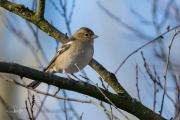
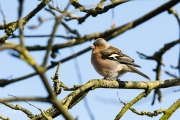
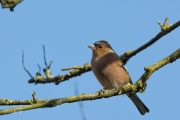
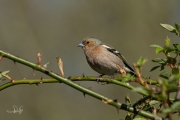
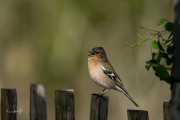
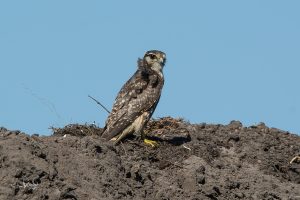
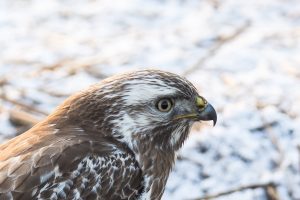
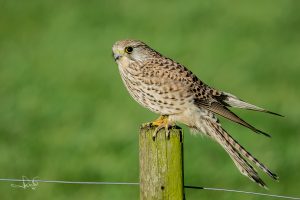
Would be great to see some stats by country. Fascinating, I’d never heard of this. I wonder if they do it in New Zealand? I don’t know if you’ve heard of a tui, a native bird from NZ. Truly captivating in every way.
That would be great indeed. Don’t they have a garden bird count in New Zealand? Perhaps you can approach Forest and Bird to think about it?
That tui is a beautiful bird, by the way.
In Sweden it was no 16 last year. They are common, but not as common as in your country it seems. I have a few coming to my garden every day to feed on sunflower-seeds. They are a litte shy and only feed from the ground. Looking forward to my fourth year as a participant in the bird counting, although I watch and count “my” birds almost every day 🙂
That is indeed quite a difference from here. But you have other beautiful birds that are less common here, such as waxwings, nutcrackers, redpolls and many more. A lot of success and fun with your bird count!